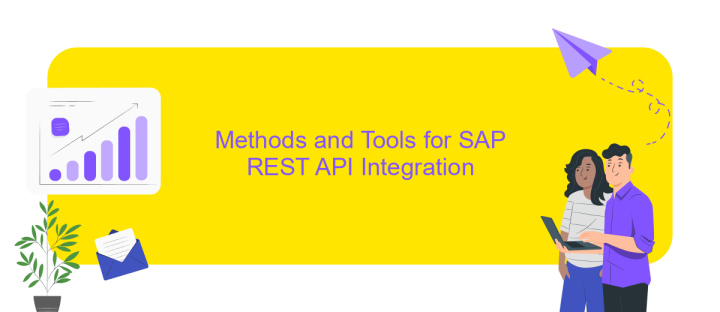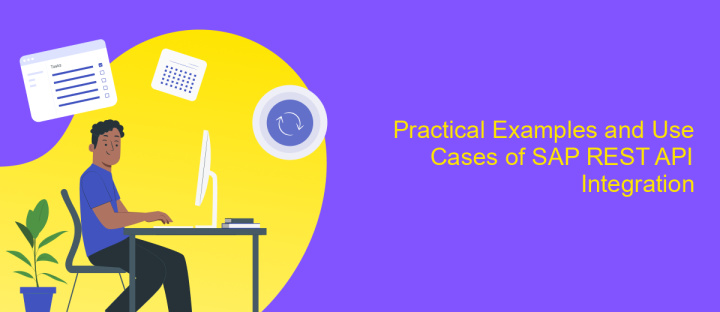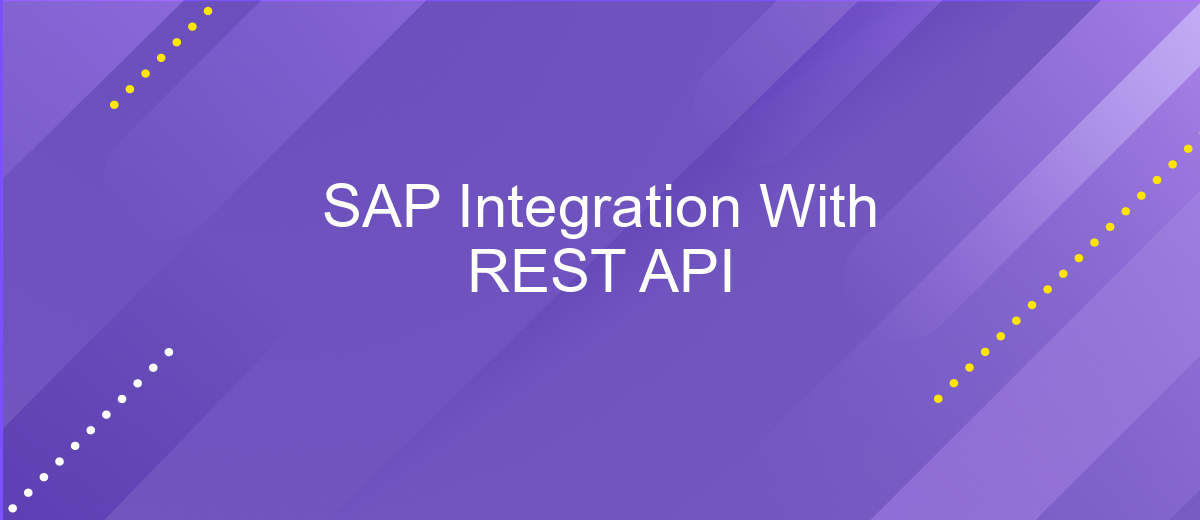SAP Integration With REST API
Integrating SAP with REST API offers businesses a streamlined approach to enhance their operational efficiency and data management. By leveraging RESTful services, organizations can seamlessly connect SAP systems with external applications, enabling real-time data exchange and improved interoperability. This integration not only simplifies complex processes but also supports scalability and innovation, empowering businesses to adapt quickly to changing market demands and technological advancements.
Introduction to SAP Integration and REST APIs
SAP integration involves connecting SAP systems with other software applications to streamline business processes and enhance data flow. This integration is critical for organizations seeking to maximize their SAP investments and improve operational efficiency. REST APIs, or Representational State Transfer Application Programming Interfaces, offer a flexible and scalable approach to achieve this integration. They enable seamless communication between SAP systems and external applications using standard HTTP methods.
- Flexibility: REST APIs provide a lightweight and flexible way to integrate various systems.
- Scalability: They support scalable solutions, accommodating growing business needs.
- Interoperability: REST APIs facilitate communication across different platforms and technologies.
By leveraging REST APIs, businesses can enhance their SAP systems' capabilities, allowing for real-time data exchange and improved decision-making. This approach not only reduces integration complexity but also accelerates the deployment of new features and services. Overall, SAP integration with REST APIs empowers organizations to create more agile and responsive IT environments, driving innovation and competitiveness in today's fast-paced market.
Understanding REST API Principles and Architecture

REST API (Representational State Transfer Application Programming Interface) is a set of principles that define how web standards such as HTTP and URIs are used to create scalable and efficient web services. REST is based on a stateless, client-server communication model, where the server provides resources and the client accesses them using standard HTTP methods like GET, POST, PUT, and DELETE. This architecture ensures that each request from a client to a server contains all the information needed to understand and process the request, making it stateless and allowing for easier scalability.
Understanding the principles of REST API is crucial for integrating various systems and applications, such as SAP, with other web services. RESTful services are designed to be simple and lightweight, which makes them ideal for connecting disparate systems. Tools like ApiX-Drive can facilitate these integrations by providing a user-friendly platform to automate and manage data flows between different services without requiring extensive coding knowledge. By adhering to RESTful principles, developers can create robust integrations that enhance functionality and improve data exchange efficiency across platforms.
Methods and Tools for SAP REST API Integration

SAP integration with REST API involves leveraging various methods and tools to ensure seamless data exchange and process automation. One common approach is using SAP Gateway, which facilitates the creation of RESTful services by exposing SAP data and functionalities to external systems. This enables developers to interact with SAP systems using standard HTTP methods, such as GET, POST, PUT, and DELETE, making it easier to integrate with web applications and third-party services.
- SAP Cloud Platform Integration (CPI): A cloud-based middleware that allows for the orchestration and integration of processes across different systems, including REST APIs.
- OData Services: SAP supports the OData protocol, which provides a standardized way to build and consume RESTful APIs, offering a flexible method for data access.
- API Management: SAP API Management offers tools for designing, publishing, and managing APIs, ensuring secure and scalable integration with RESTful services.
Choosing the right method and tool depends on the specific requirements and existing infrastructure of the organization. By utilizing these options, businesses can enhance their SAP systems' connectivity, streamline operations, and improve data accessibility across platforms.
Practical Examples and Use Cases of SAP REST API Integration

SAP integration with REST API offers a streamlined approach for businesses to connect their SAP systems with external applications and services. By leveraging REST APIs, companies can facilitate real-time data exchange, enhancing operational efficiency and decision-making. This integration enables seamless communication between SAP and non-SAP systems, allowing for a more agile and responsive IT infrastructure.
One practical example of SAP REST API integration is in the field of e-commerce. Companies can connect their SAP ERP systems with online storefronts to automate order processing and inventory management. This ensures that stock levels are updated in real-time, reducing the risk of overselling and improving customer satisfaction. Additionally, REST APIs can be used to integrate SAP with CRM systems, providing sales teams with instant access to customer data and order history.
- Automating data synchronization between SAP and third-party applications.
- Enhancing supply chain visibility by integrating SAP with logistics platforms.
- Facilitating mobile app development by connecting SAP data with mobile interfaces.
These use cases demonstrate the versatility and effectiveness of SAP REST API integration. By adopting this approach, organizations can unlock new opportunities for innovation and growth, ensuring that their SAP systems remain a central, dynamic component of their digital ecosystem.
Best Practices and Considerations for SAP REST API Integration
When integrating SAP with REST APIs, it's crucial to ensure secure and efficient data exchange. Begin by thoroughly understanding the API documentation and SAP's integration capabilities. Proper authentication methods, such as OAuth2, should be implemented to safeguard data. Additionally, consider using data validation techniques to ensure data integrity and consistency across systems. It's also beneficial to leverage middleware solutions, like ApiX-Drive, which can simplify the integration process by providing pre-built connectors and automation features, reducing the need for custom coding.
Monitoring and maintaining the integration are vital for long-term success. Implement logging and error-handling mechanisms to quickly identify and resolve issues. Regularly review and update the integration to adapt to any changes in the API or SAP system. Performance optimization is another key consideration; ensure the integration is scalable and can handle increased data loads. Finally, thorough testing in a staging environment before deployment will help identify potential issues and ensure a smooth integration process.
FAQ
What is SAP integration with REST API?
How does REST API work with SAP?
What are the benefits of integrating SAP with REST API?
What challenges might arise during SAP integration with REST API?
How can I automate SAP integration with REST API?
Time is the most valuable resource in today's business realities. By eliminating the routine from work processes, you will get more opportunities to implement the most daring plans and ideas. Choose – you can continue to waste time, money and nerves on inefficient solutions, or you can use ApiX-Drive, automating work processes and achieving results with minimal investment of money, effort and human resources.

